Will 2024 be the Year of the Aurora?
The Sun’s approximate eleven-year activity cycle is predicted to peak this year, prompting BGS scientists to anticipate that 2024 will be the ‘Year of the Aurora’.
23/02/2024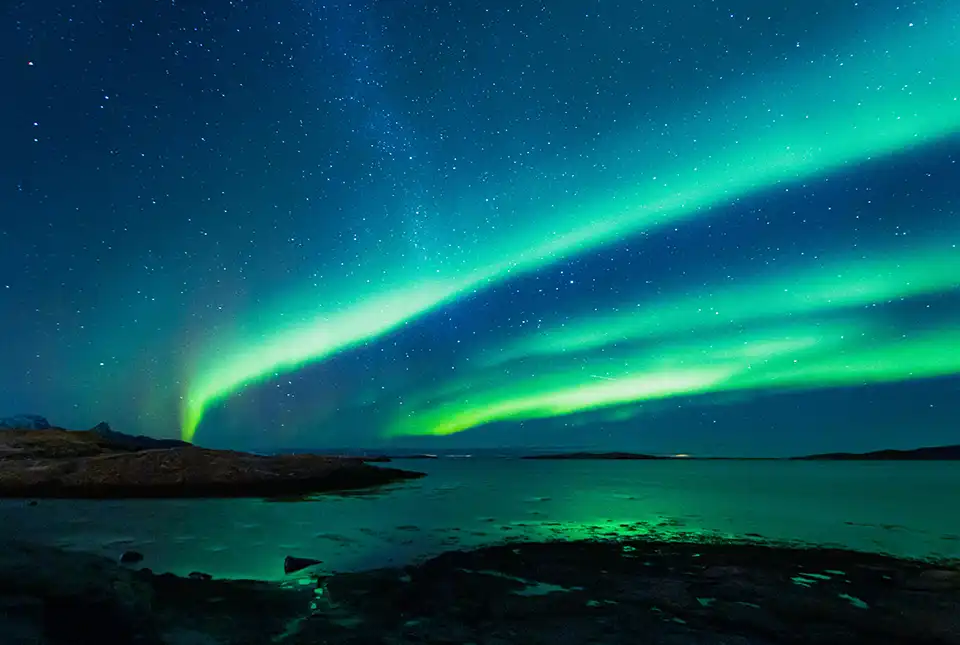
The aurora is a natural display of light in the night sky, with bands of green, red or purple lights that shimmer and change appearance over time. It is usually seen around the Arctic and Antarctic circles, which are also referred to as ‘auroral zones’.
The northern lights (or aurora borealis) can often be seen in Alaska, Canada, Iceland, Scandinavia, Finland and Russia, whilst the southern lights, or aurora australis, can be observed in Antarctica, New Zealand and Australia. However, during periods of intense geomagnetic activity, the auroral zones broaden and travel toward the equator. At these times people who live at lower latitudes, such as in the UK, may have a better chance of seeing the aurora too.
Strong solar activity can affect the Earth’s magnetic field and result in spectacular displays of the northern and southern lights. As solar activity is expected to peak in 2024, we could be in for some beautiful skies this year.
Why does the aurora happen?
The aurora we see dancing in the night sky is caused by activity on the Sun. The Sun is an enormous ball of super-hot ionised gas that continually emits a stream of charged particles, which is known as the solar wind. The solar wind isn’t always the same; its speed and strength can vary depending on solar activity driven by a variety of structures, such as coronal holes and active regions, that can be observed on the surface of the Sun.
Coronal holes are temporary features that can form on the Sun. These are vast areas where the Sun’s magnetic field opens up, allowing the high-speed solar wind to stream out into the solar system. This fast solar wind can take around three days to reach us on Earth.
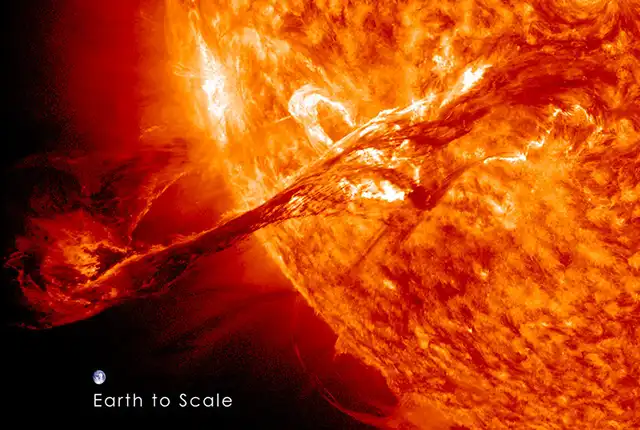
A coronal mass ejection erupting into space on 31 August 2012. An image of Earth is superimposed to show the size of the coronal mass ejection compared to the size of the Earth. © NASA/GSFC/SDO.
Active regions on the Sun are areas of strong and complex magnetic fields. These areas appear as dark ‘sunspots’ on the solar surface and can produce explosive events such as solar flares and coronal mass ejections. Coronal mass ejections are huge fast-moving clouds of charged particles launched by the Sun. They may take one to three days to arrive at Earth.
If these solar ‘storms’ are directed towards the Earth, the solar wind will interact with the Earth’s magnetic field, which directs the solar wind’s particles toward the polar regions. These charged particles slam into the atoms in the Earth’s atmosphere and the energy released during these collisions is emitted as light, causing the glow of the aurora.
The colours that appear depend on the mixture of gases in the atmosphere. Green aurorae result from interactions of solar particles with oxygen; however, at higher altitudes, collisions with oxygen produce red aurorae. Blue and purple shades are caused by collisions with nitrogen.
What is the solar cycle?
The Sun goes through an approximate eleven-year activity cycle, which is measured by the number of sunspots seen on the Sun. During solar minimum, few sunspots are counted and solar activity is usually low. During solar maximum, many sunspots are seen, increasing the frequency of solar storms. As we know, these solar storms can lead to geomagnetic disturbances on Earth.
Solar cycles have been recorded since the eighteenth century. Back in 2020, a panel of scientists predicted that the current solar cycle (solar cycle 25) would be fairly weak, similar to the previous cycle. Solar activity was expected to peak around July 2025. In October 2023, the Space Weather Prediction Center of the USA’s National Oceanic and Atmospheric Administration issued a revised prediction for solar activity. This forecast a quicker, stronger peak of activity with solar maximum expected between January and October 2024.
This is why we expect 2024 to be a good year for aurora-spotting opportunities.

A plot of sunspot numbers from 2012 showing the end of solar cycle 24, the start of solar cycle 25 from 2020 and the original prediction (in red). Actual solar activity has risen faster and higher than predicted. From https://www.swpc.noaa.gov/products/solar-cycle-progression.
Why is BGS interested in the aurora?
Knowledge of the Earth’s geomagnetic field is necessary when using a compass to navigate. The location of Earth’s magnetic poles gradually shifts over time and scientists at BGS model these movements to predict how it will change in the future.
Strong and rapid variations in the Earth’s magnetic field due to solar storms can cause errors in the magnetic corrections required for navigation and induce electric currents in the ground, which can then travel into power lines, pipelines and railways. In the power grid, these geomagnetically induced currents can overload transformers, resulting in power outages. They can increase corrosion in pipelines and can disrupt railway signalling (as recently reported by BBC News).
BGS provides various space weather services to organisations such as the National Grid, the UK Met Office and the European Space Agency to monitor current geomagnetic conditions and forecast future geomagnetic activity.
How can I see the northern lights in the UK?
The likelihood of seeing the northern lights varies across the UK and depends on a number of factors, most importantly how disturbed the Earth’s magnetic field is and how far north you are. Those in the north of Scotland may see the northern lights often with only minor geomagnetic disturbances. When activity gets more disturbed and the auroral zone moves southward, more of Scotland, Northern Ireland and the north of England have a chance of seeing it. It usually requires a rare and significantly large magnetic storm for the aurora to be seen widely across southern England and Wales.
The aurora sits above cloud level, so you need to get lucky with the UK’s typically overcast weather as clear skies are necessary to spot the aurora. Head to a dark place away from light pollution; a full moon can also cause issues if the aurora is faint. Generally, look to the north, although during intense storms it could be overhead or elsewhere. Having a clear view to the northern horizon either from the coast or from an elevated position can be advantageous.
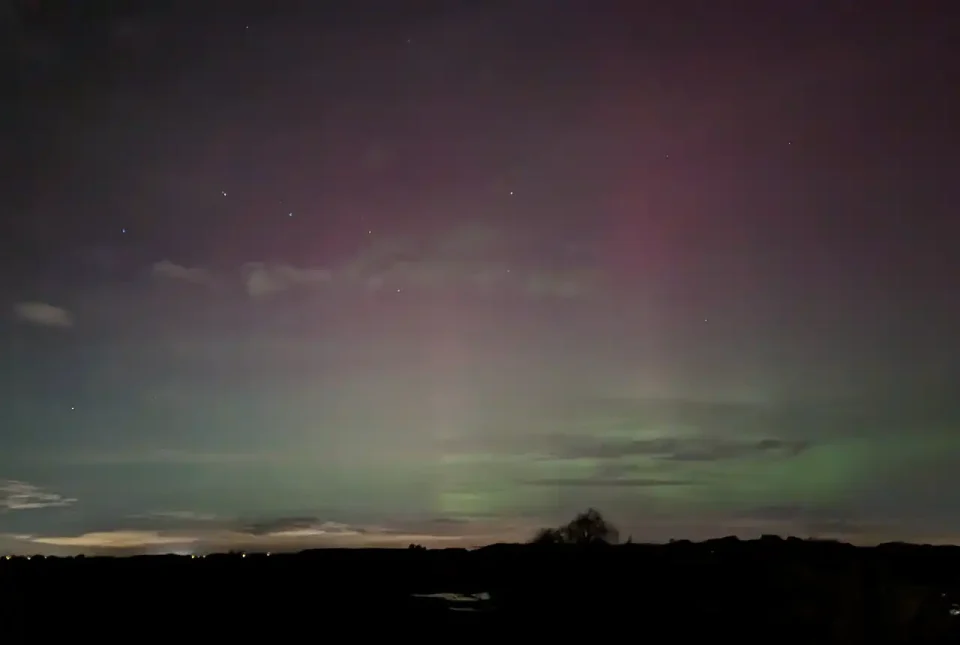
Aurora borealis photographed from the Vale of Belvoir, Nottinghamshire, November 2023. © Jacqueline Hannaford.
Expectation vs reality
To get the best view of the aurora you will need a camera. Photographs of the aurora will often portray the aurora as much brighter than can be seen by the naked eye. Long-exposure photographs can take in more light, exposing the colours in the sky, whilst by eye a weak aurora may appear more monochrome and cloud-like. This YouTube video explains more.
Modern smartphones often have night-mode photography options, which can take reasonable photos of the aurora without the need for expensive photographic equipment. Having a tripod to stabilise your camera or smartphone can help avoid vibration during long-exposure photographs.
Stay updated with the BGS
- BGS produces daily three-day forecasts of geomagnetic activity
- We also post daily 24-hour forecasts on X (formerly Twitter)
- When there is significant geomagnetic storm predicted, we send out notifications to inform the public of the increased chance of seeing the aurora: sign up for these email alerts or you can follow the alerts on X

An example of the BGS geomagnetic activity forecast for a three-day period. We predict the average and maximum global geomagnetic activity. BGS © UKRI.
About the author
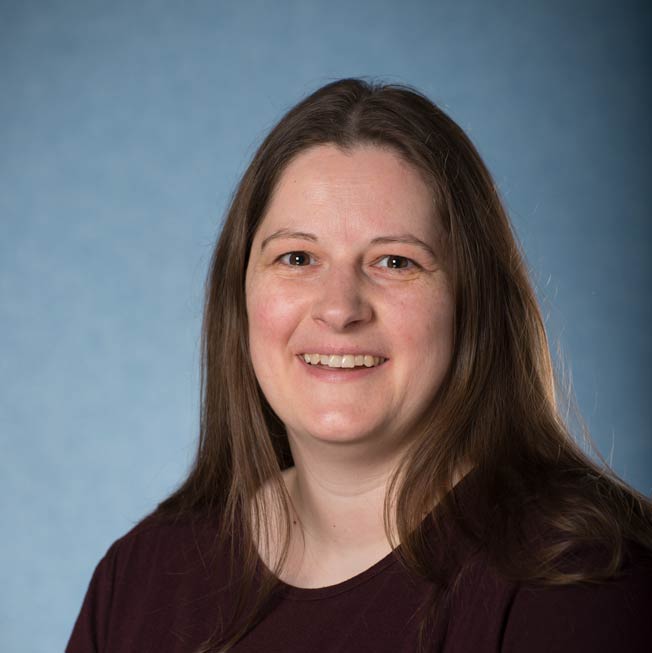
Sarah Reay
Geomagnetic data analyst
Relative topics
Related news
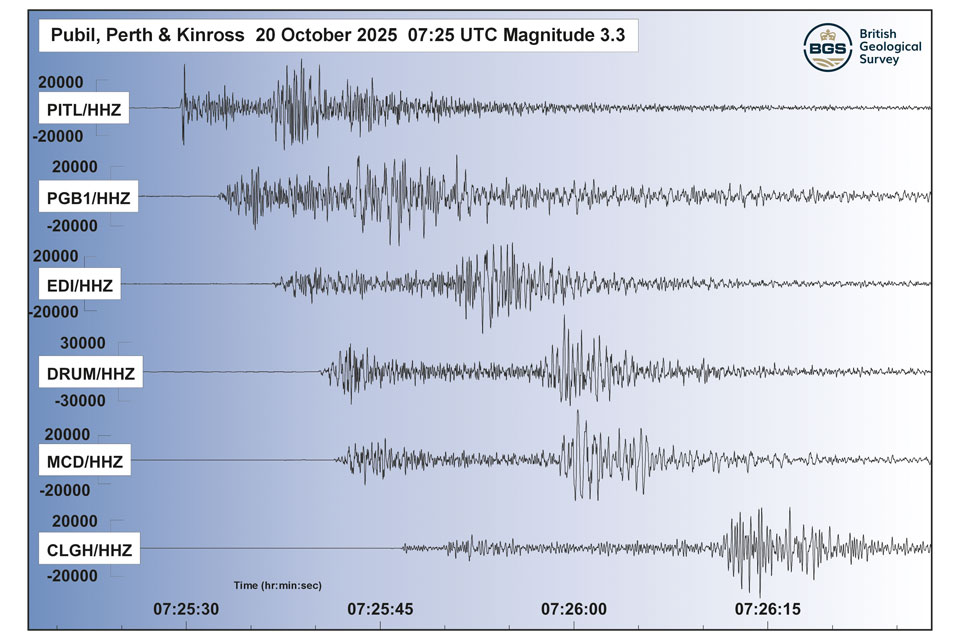
Perth and Kinross tops the UK’s earthquake activity charts for 2025
29/12/2025
Seismologists at the British Geological Survey have published data on the number of seismic events over the past 12 months with over 300 earthquakes recorded.

Hole-y c*@p! How bat excrement is sculpting Borneo’s hidden caves
23/12/2025
BGS researchers have delved into Borneo’s underworld to learn more about how guano deposited by bats and cave-dwelling birds is shaping the subsurface.
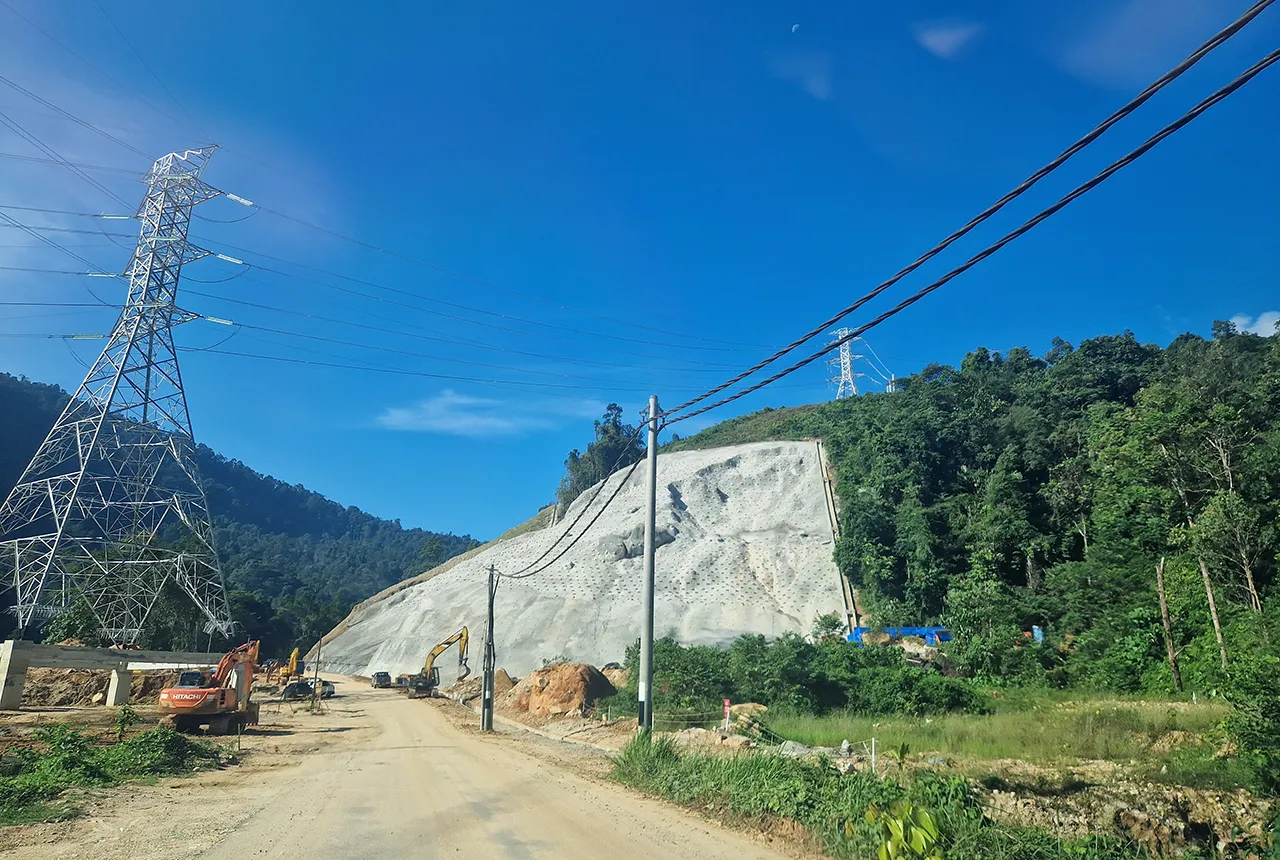
BGS awarded funding to support Malaysia’s climate resilience plan
17/12/2025
The project, funded by the Foreign, Commonwealth & Development Office, will focus on minimising economic and social impacts from rainfall-induced landslides.
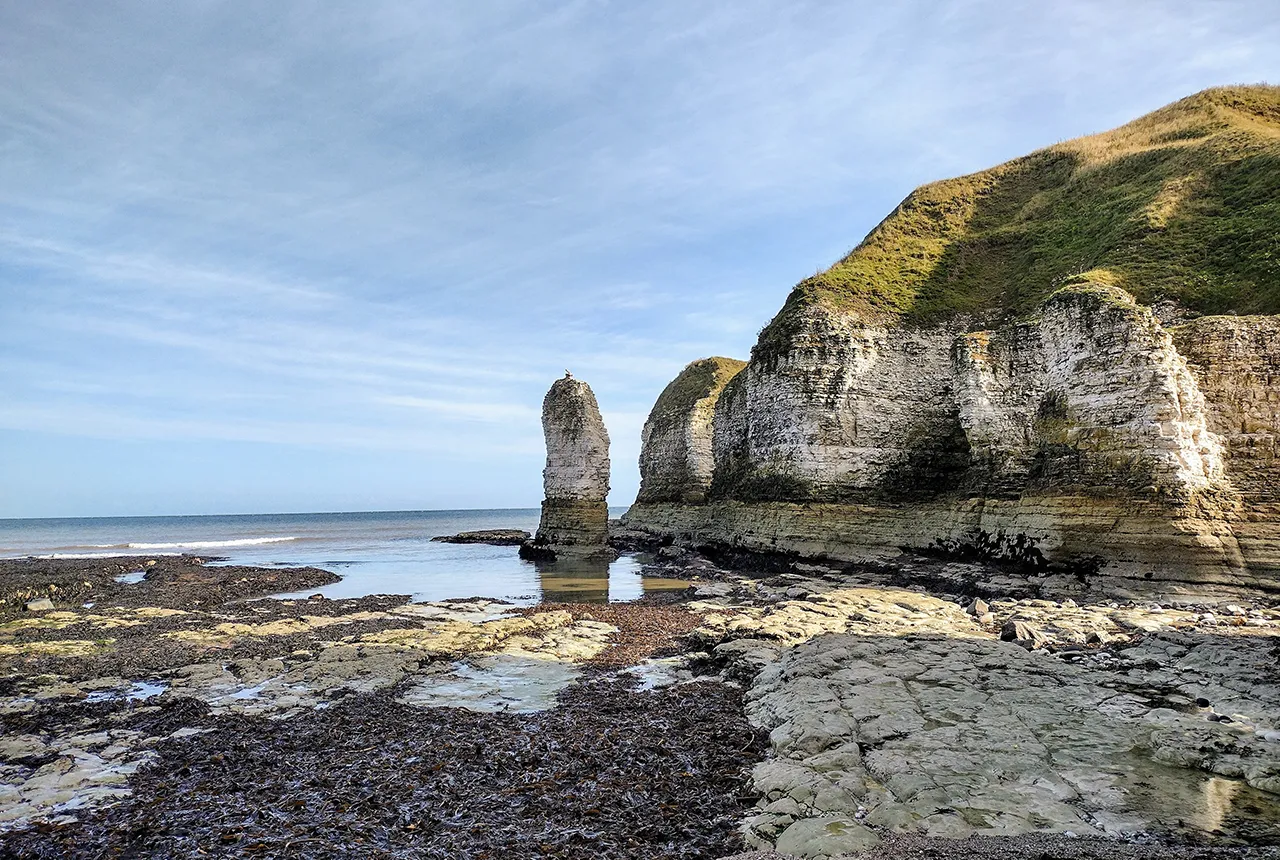
New geological maps of the Yorkshire Wolds to better inform groundwater management and policy decisions
17/12/2025
The new mapping provides crucial data on localised geological issues that may assist in protecting water supplies.
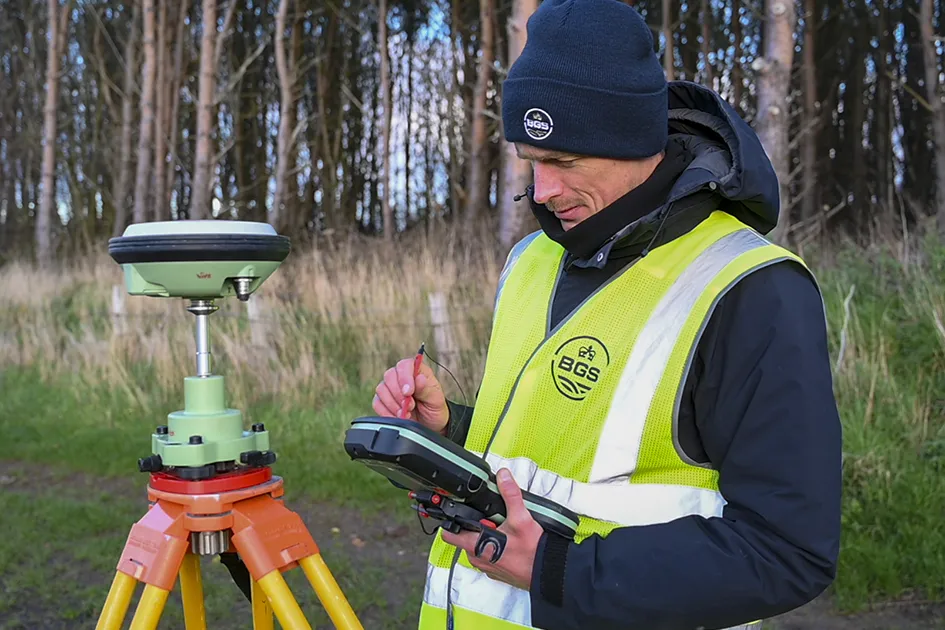
‘Three norths’ set to leave England and not return for hundreds of years
12/12/2025
The historic alignment of true, magnetic, and grid north is set to leave England, three years after they combined in the country for the first time since records began.

BGS agrees to establish collaboration framework with Ukrainian government
11/12/2025
The partnership will focus on joint research and data exchange opportunities with Ukrainian colleagues.
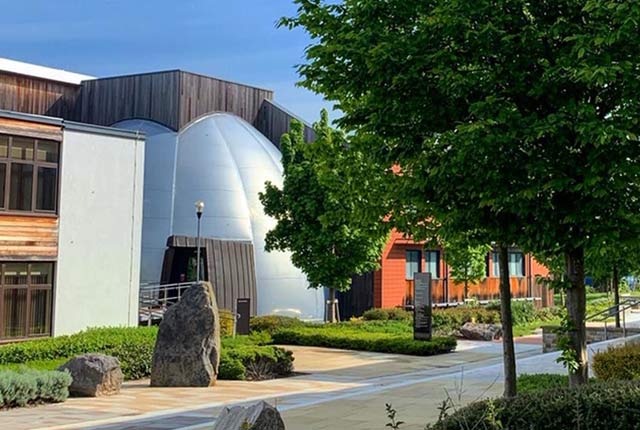
Making research matter: BGS joins leading research organisations in new national initiative
10/12/2025
A new alliance of 35 organisations has been formed that is dedicated to advancing science for the benefit of people, communities, the economy and national priorities.

New 3D model to help mitigate groundwater flooding
08/12/2025
BGS has released a 3D geological model of Gateshead to enhance understanding of groundwater and improve the response to flooding.
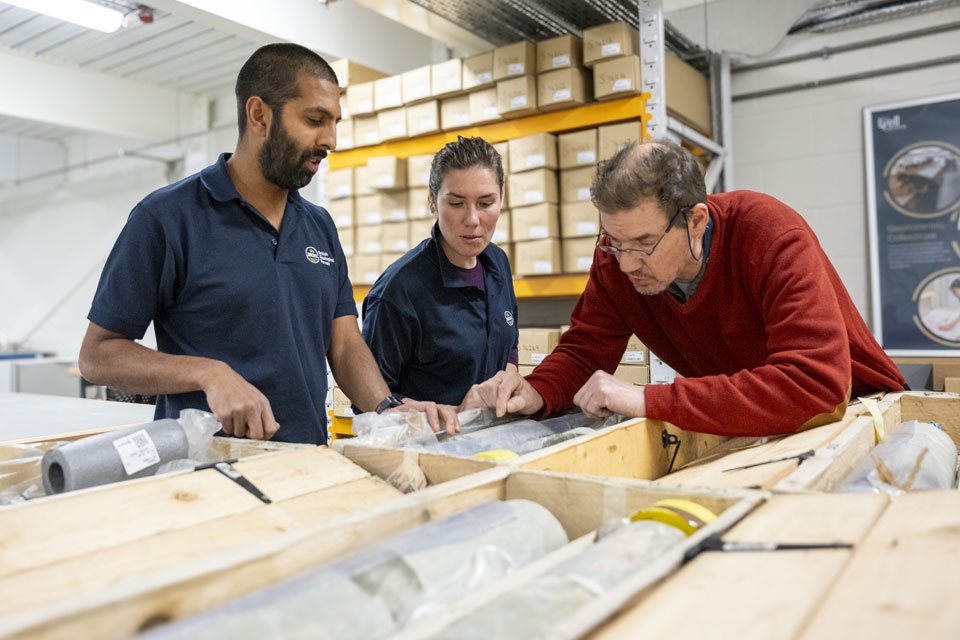
Scientists gain access to ‘once in a lifetime’ core from Great Glen Fault
01/12/2025
The geological core provides a cross-section through the UK’s largest fault zone, offering a rare insight into the formation of the Scottish Highlands.

New research shows artificial intelligence earthquake tools forecast aftershock risk in seconds
25/11/2025
Researchers from BGS and the universities of Edinburgh and Padua created the forecasting tools, which were trained on real earthquakes around the world.

BGS welcomes publication of the UK Critical Minerals Strategy
23/11/2025
A clear strategic vision for the UK is crucial to secure the country’s long-term critical mineral supply chains and drive forward the Government’s economic growth agenda.

New funding awarded for UK geological storage research
21/11/2025
A project that aims to investigate the UK’s subsurface resource to support net zero has been awarded funding and is due to begin its research.



